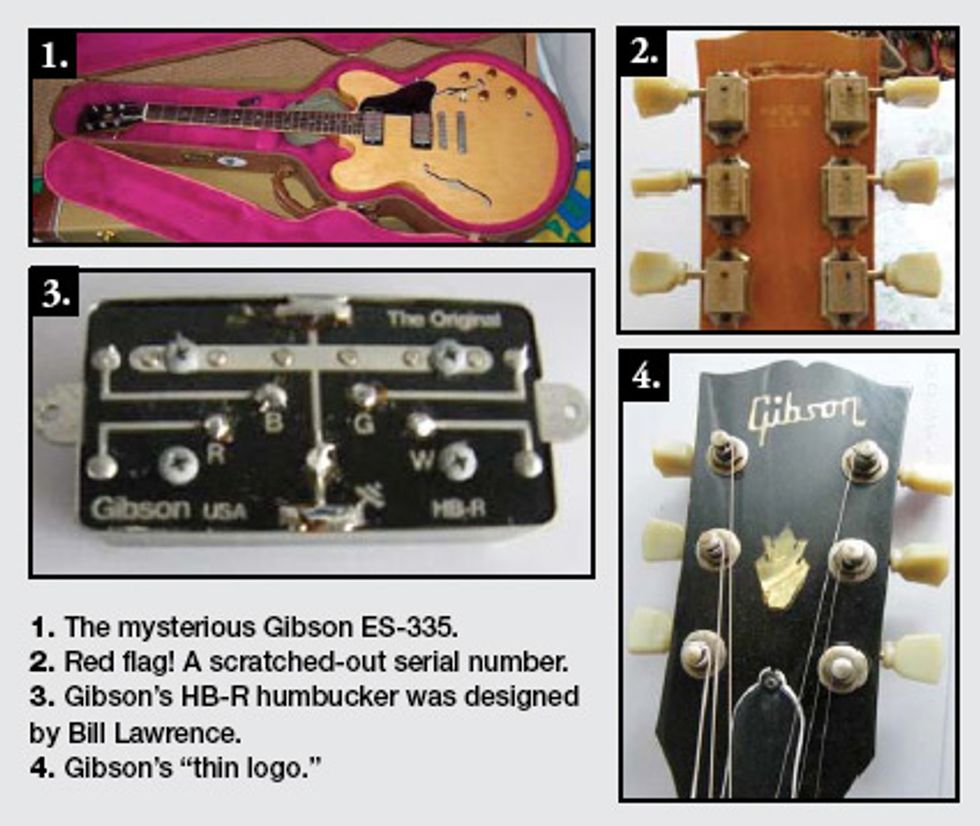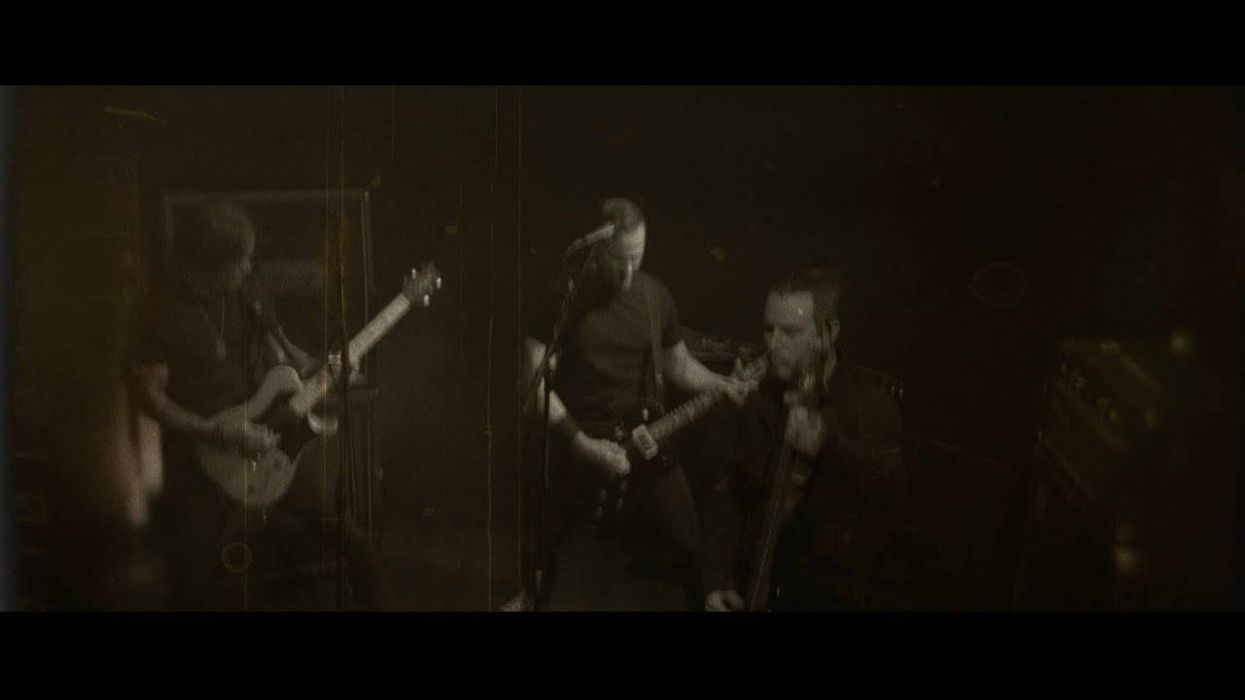Hi Zach,
I’m the owner of a beautiful ES-335 I purchased in the early
’90s, and I’m trying to identify it. I don’t know anything
about its history and would like to know where and when it
was built, and its value. I’ve replaced the pickups and potentiometers,
but still have the originals.
—Thomas in Denmark

Hi Thomas,
I had to put on my thinking cap to identify and date your ES-335. When I first saw the photos, I thought I was looking at a pieced-together fake. Examining valuable and collectible vintage guitars, I use the term “adding up”—meaning all the components and the condition of the guitar need to agree with each other. This includes serial numbers, pot dates, and finish wear. But on your guitar, the serial number is scratched out and there’s no interior label. This guitar looked particularly suspicious because it’s in Gibson’s most desirable ES-335 configuration— a natural blonde finish, dot inlays, and a stop tailpiece. Desirable configuration, highly collectible, and no serial number equals a major red flag.
Without the serial number, we need to use the headstock logo, pickups, pots, and control knobs to try to date the guitar. After researching many books and websites, I believe I’ve figured it out!
Here is what we do know about the guitar from the photos. The Gibson logo on the headstock is referred to as the “thin logo,” which includes the dot on the “i” and the upper link between the “o” and the “n.” The original pickups (or at least the pickups that were in the guitar when you bought it) are Gibson HB-R and HB-L humbuckers. The original potentiometers have the part numbers of 440-70028 and 440-70035, and a date code of R 1378951. The knobs are amber top hats, which were originally used in the late 1950s and early 1960s.
This is what I’ve discovered through my research: The headstock logo dates post-1981, when the upper link was added between the “o” and the “n.” The Gibson HB-R and HB-L pickups were designed by Bill Lawrence and, according to a few sources, only available in the late 1980s (Lawrence worked at Gibson in the 1970s and 1980s). The pots have production codes assigned by Gibson that were used between 1971 and 1981 according to Gibson’s various parts lists. Interestingly, the date codes indicate they are from the 51st week of 1989, meaning they were used much later than they were produced. And while amber top hat knobs were originally used in the late ’50s and early ’60s, they made a comeback in the 1980s.
It is well documented that Gibson used block inlays on their ES-335 fretboards between mid-1962 and 1981, and the trapeze tailpiece was used between late 1964 and 1981. All of this indicates that the guitar was built during the 1980s, and is not from the late 1950s or early 1960s, as I had initially thought. I checked Gibson’s 1983 catalog and found a mate to this guitar. While we may not be able to determine the exact year of this Gibson, at least we can date it to the 1980s production era.
In 1981, Gibson replaced the ES-335TD with the ES-335 Dot, which was based on the 1960 Gibson ES-335. This new “Dot” was produced throughout the 1980s without any major changes. If your guitar was all stock and in mint condition, it would be worth somewhere between $2400 and $2750. ES-335 Dots from the 1980s finished in natural are the most desirable from this era, as well. Based on your pickup and pot mods—and the minor finish wear—your guitar is currently worth between $1750 and $2000. If this was an original ES-335 from the late 1950s or 1960, it would be worth $40,000 or more— the main reason I was originally suspicious this guitar may be a fake!
How do we explain the scratched-out serial number? When Thomas inquired about this, he was told that years ago, certain overseas guitar dealers obtained Gibsons for less money by going around the official Gibson importer and removing the serial number to prevent being caught. Sounds plausible, but I’m still hesitant to authenticate this guitar without any documentation.
The bottom line: Get as much documentation as possible when you buy a guitar. And never take someone’s story as official documentation—it will not help your cause down the road if you want to sell. If the serial number is missing or scratched out, just ask why. Would you buy a car if the VIN was removed or there was no title? All said, if you find a guitar without dating information, but still fall in love with how it plays and sounds, consider it your own personal treasure without an official birth date!
 Zachary R. Fjestad
is author of Blue Book of
Acoustic Guitars, Blue Book
of Electric Guitars, and Blue
Book of Guitar Amplifiers.
For more information, visit
bluebookinc.com or email
Zach at guitars@bluebookinc.com.
Zachary R. Fjestad
is author of Blue Book of
Acoustic Guitars, Blue Book
of Electric Guitars, and Blue
Book of Guitar Amplifiers.
For more information, visit
bluebookinc.com or email
Zach at guitars@bluebookinc.com.














